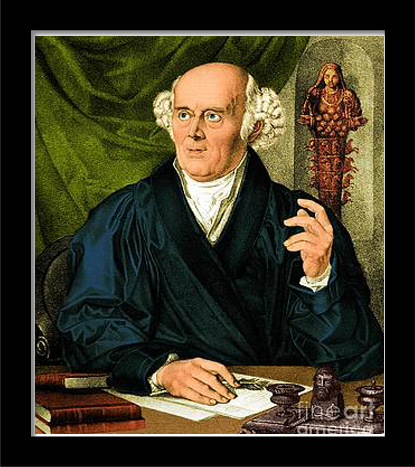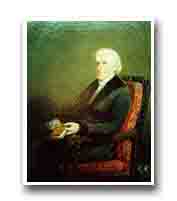 The Organon by Dr. Hahnemann is a seminal text in the world of homeopathy. This article explores the history, content, and relevance of Organon for modern homeopathic practice.
The Organon by Dr. Hahnemann is a seminal text in the world of homeopathy. This article explores the history, content, and relevance of Organon for modern homeopathic practice.
Homeopathy is a system of alternative medicine that aims to treat the underlying causes of illness by stimulating the body’s natural healing processes. It was founded by German physician Samuel Hahnemann in the late 18th century. Hahnemann’s seminal work, Organon of the Medical Art, published in 1810, laid the foundation for the principles and practice of homeopathy. The book has gone through several revisions, and its importance to homeopathy cannot be overstated. In this article, we explore the significance of Organon by Hahnemann for modern homeopathy.
- A
- B
- C
- D
- E
- F
- G
- H
- I
- J
- K
- L
- M
- N
- O
- P
- Q
- R
- S
- T
- U
- V
- W
- X
- Y
- Z
A
- APHORISMS 1 – 8 “PHYSICIAN AND THE MEDICAL ART”
- APHORISMS 101 – 104 “INVESTIGATING EPIDEMIC DISEASES”
- APHORISMS 105 – 107 “SECOND POINT: INVESTIGATING THE ACTION OF REMEDIES”
- APHORISMS 108 – 119 “PROVINGS AND TOXICOLOGY”
- APHORISMS 120 – 132 “PROVINGS”
- APHORISMS 133 – 145 “PROVINGS AND MODALITIES”
- APHORISMS 146 – 151 “THIRD POINT: THE BEST USE OF THE REMEDIES”
- APHORISMS 152 – 156 “STRIKING SYMPTOMS (KEYNOTES)”
- APHORISMS 157 – 159 “INITIAL AGGRAVATION”
- APHORISMS 160 – 171 “AGGRAVATION IN CHRONIC DISEASES”
- APHORISMS 172 – 184 “ONE-SIDED DISEASES”
- APHORISMS 185 – 195 “LOCAL SYMPTOMS AND SURGERY”
- APHORISMS 19 – 29 “HOMEOPATHY, ALLOPATHY, ANTIPATHY”
- APHORISMS 196 – 203 “EXTERNAL APPLICATIONS”
- APHORISMS 204 – 209 “CHRONIC DISEASES AND CASE-TAKING”
- APHORISMS 210 – 230 “DISEASES OF MENTAL AND EMOTIONAL LEVELS”
- APHORISMS 231 – 235 “INTERMITTENT AND ALTERNATING DISEASES”
- APHORISMS 236 – 252 “DOSES, REPETITION AND ACUTES”
- APHORISMS 253 – 258 “CRITERIA OF AMELIORATION OR AGGRAVATION”
- APHORISMS 259 – 265 “DIET AND HABITS OF LIFE”
- APHORISMS 266 – 272 “MEDICINAL SOLUTIONS BY PLANTS”
- APHORISMS 273 – 285 “DOSES”
- APHORISMS 286 – 291 “MESMERISM, BATHS, MASSAGE”
- APHORISMS 30 – 34 “POWER OF REMEDY VS POWER OF DISEASE”
- APHORISMS 35 – 42 “CO-EXISTENCE OF DIFFERENT DISEASES”
- APHORISMS 43 – 52 “SIMILAR DISEASES”
- APHORISMS 43 – 52 “SIMILAR DISEASES”
- APHORISMS 53 – 56 “ALLOPATHIC METHOD OF CURE”
- APHORISMS 57 – 62 “PALLIATIVE METHODS OF CURE”
- APHORISMS 63 – 71 “PRIMARY ACTION AND REACTION”
- APHORISMS 72 – 79 “FIRST POINT: PHARMACOLOGY”
- APHORISMS 80 – 82 “INVESTIGATING THE ACTION OF REMEDIES”
- APHORISMS 83 – 92 “INDIVIDUALIZED EXAMINATION OF A CASE OF DISEASE”
- APHORISMS 9 – 18 “THE VITAL FORCE”
The History of Organon by Hahnemann:
Samuel Hahnemann was a German physician who developed the principles of homeopathy based on his own observations and experiments. In 1810, he published his seminal work, Organon of the Medical Art. The book went through several revisions, with the sixth edition, published in 1921, being the most widely used.
The Content of Organon by Hahnemann:
Organon by Hahnemann is divided into six parts, each of which deals with a specific aspect of homeopathic theory and practice. The first part deals with the fundamental principles of homeopathy, including the principle of similia similibus curentur (let likes be cured by likes) and the importance of individualization in treatment. The second part deals with the process of homeopathic prescribing, including the selection of the remedy and the determination of the dose. The third part deals with the concept of the vital force and its role in health and disease. The fourth part deals with the treatment of acute diseases, while the fifth part deals with the treatment of chronic diseases. The sixth and final part deals with the importance of diet, hygiene, and general management in the treatment of disease.
The Relevance of Organon by Hahnemann for Modern Homeopathy:
Organon by Hahnemann is still relevant to modern homeopathy in several ways. Firstly, it lays the foundation for the principles and practice of homeopathy, which remain unchanged to this day. Secondly, it provides a detailed understanding of the process of homeopathic prescribing, which is still used by homeopaths around the world. Thirdly, it emphasizes the importance of individualization in treatment, which is a key principle of modern homeopathy.
FAQs:
Q: What is Organon by Hahnemann?
A: Organon by Hahnemann is a seminal text in the world of homeopathy, written by Samuel Hahnemann in 1810.
Q: What is the importance of Organon by Hahnemann for modern homeopathy?
A: Organon by Hahnemann lays the foundation for the principles and practice of homeopathy, and its content is still relevant to modern homeopathic practice.
Q: What are the main sections of Organon by Hahnemann?
A: Organon by Hahnemann is divided into six parts, each of which deals with a specific aspect of homeopathic theory and practice.
Conclusion:
Organon by Hahnemann is a seminal text in the world of homeopathy, laying the foundation for the principles and practice of homeopathy. Its content is still relevant to modern homeopathic practice, emphasizing the importance of individualization in treatment and providing a detailed understanding of the process of homeopathic prescribing


